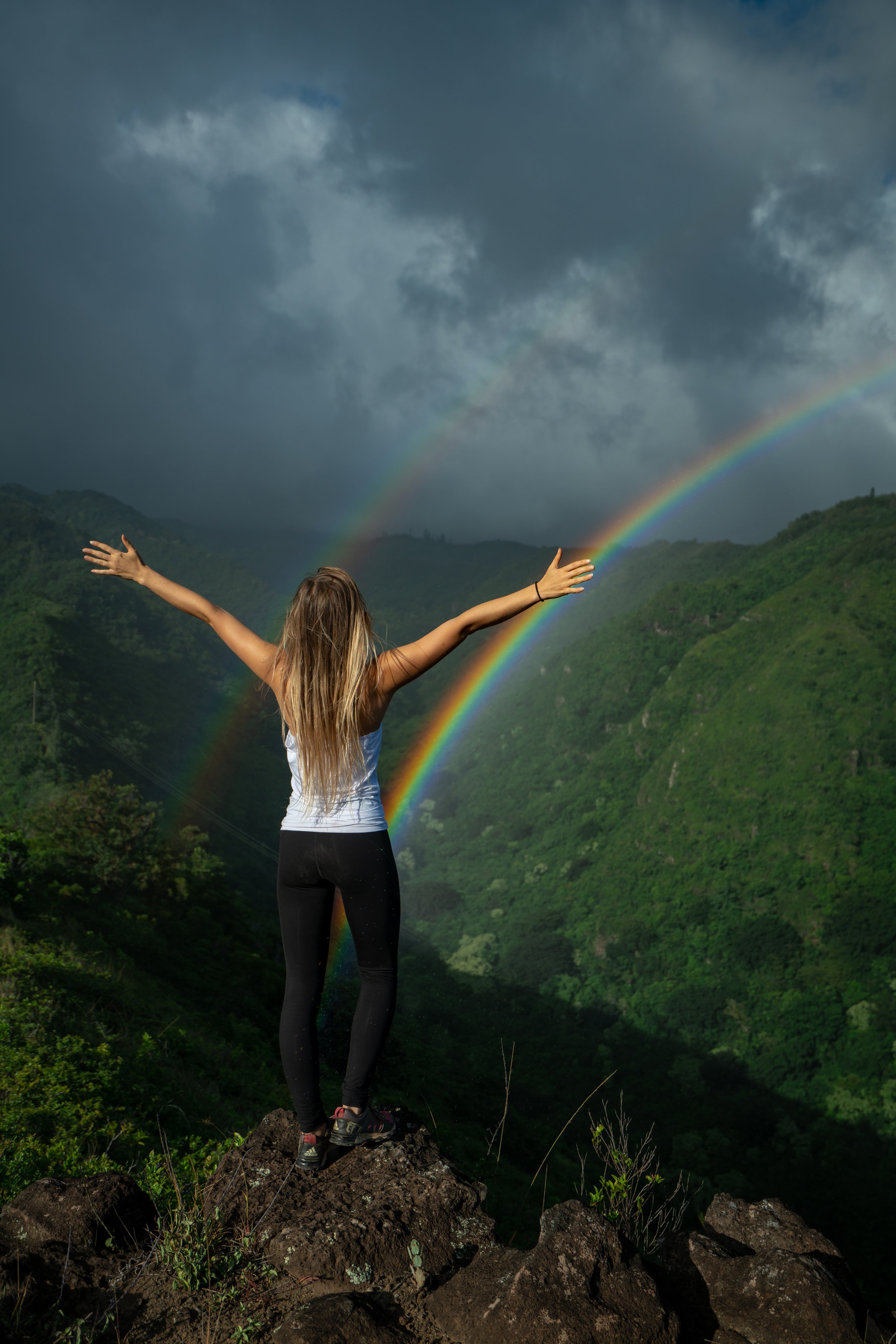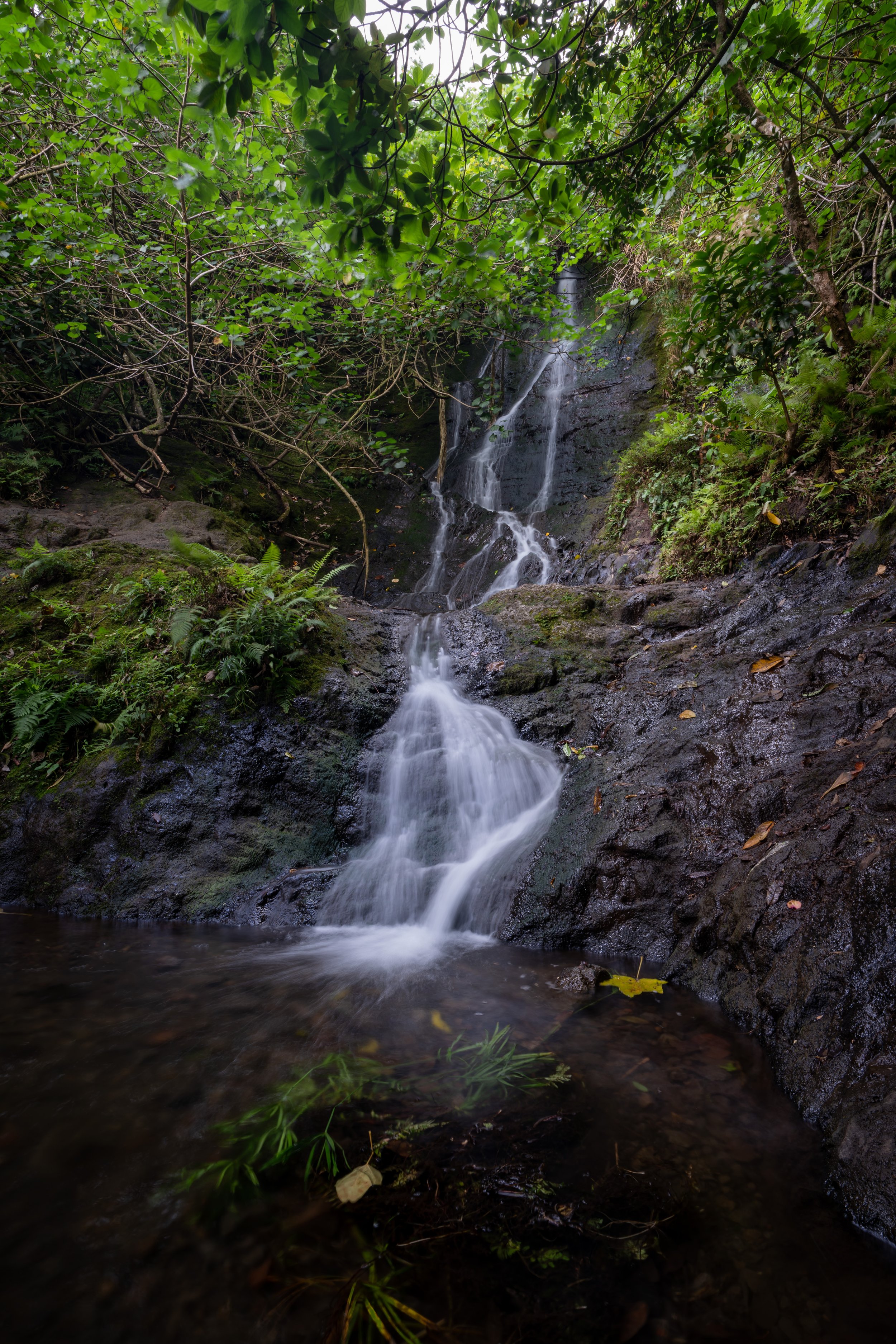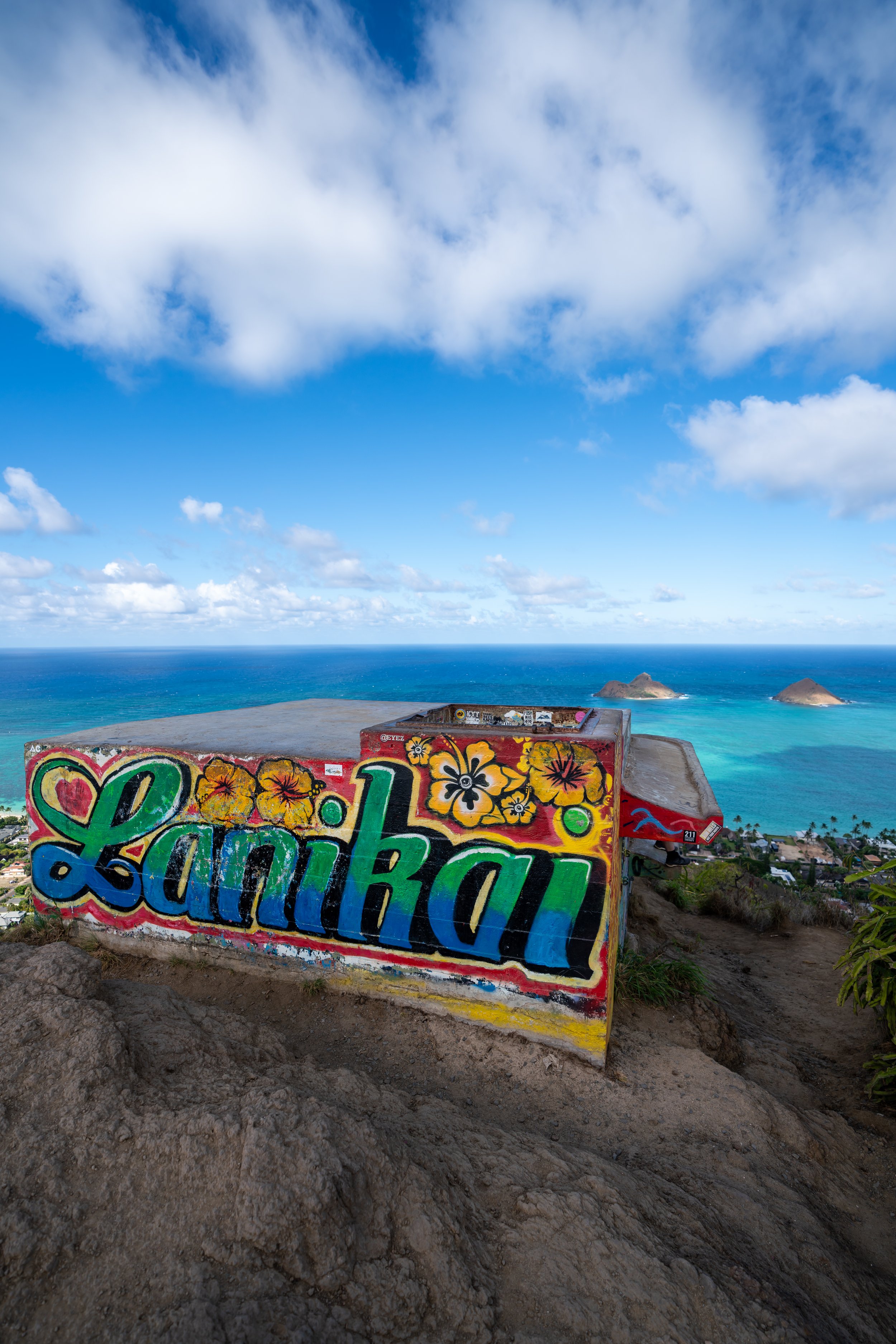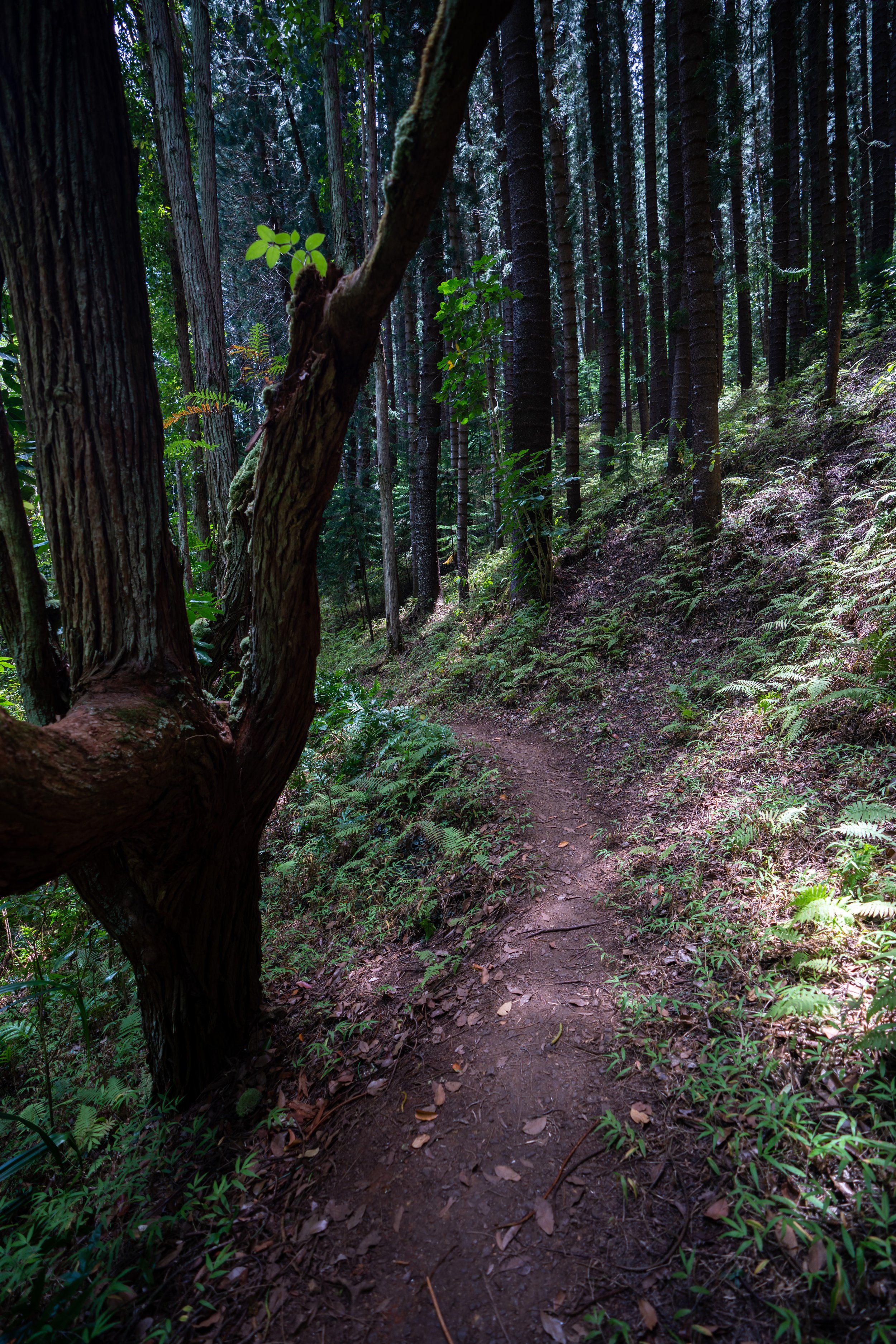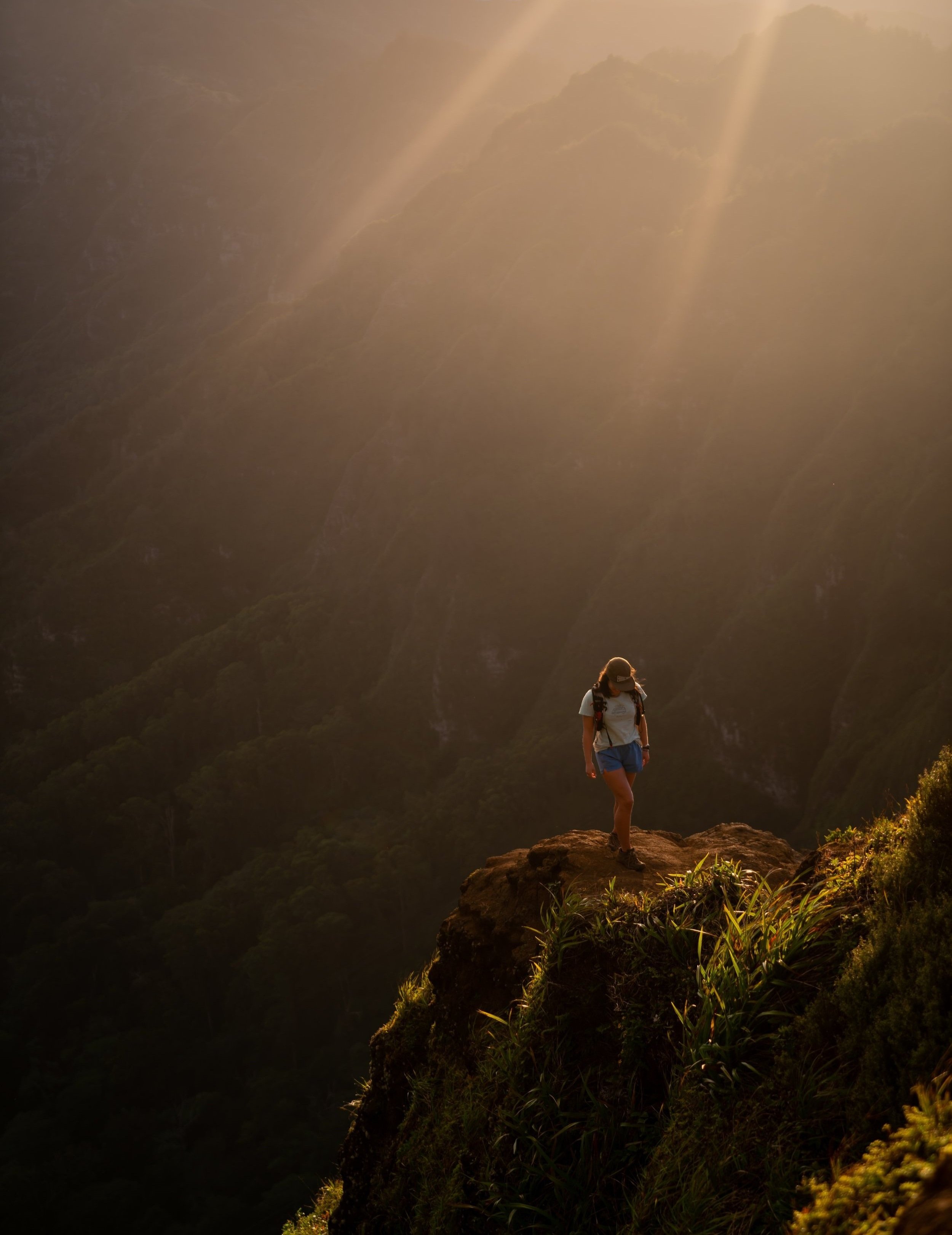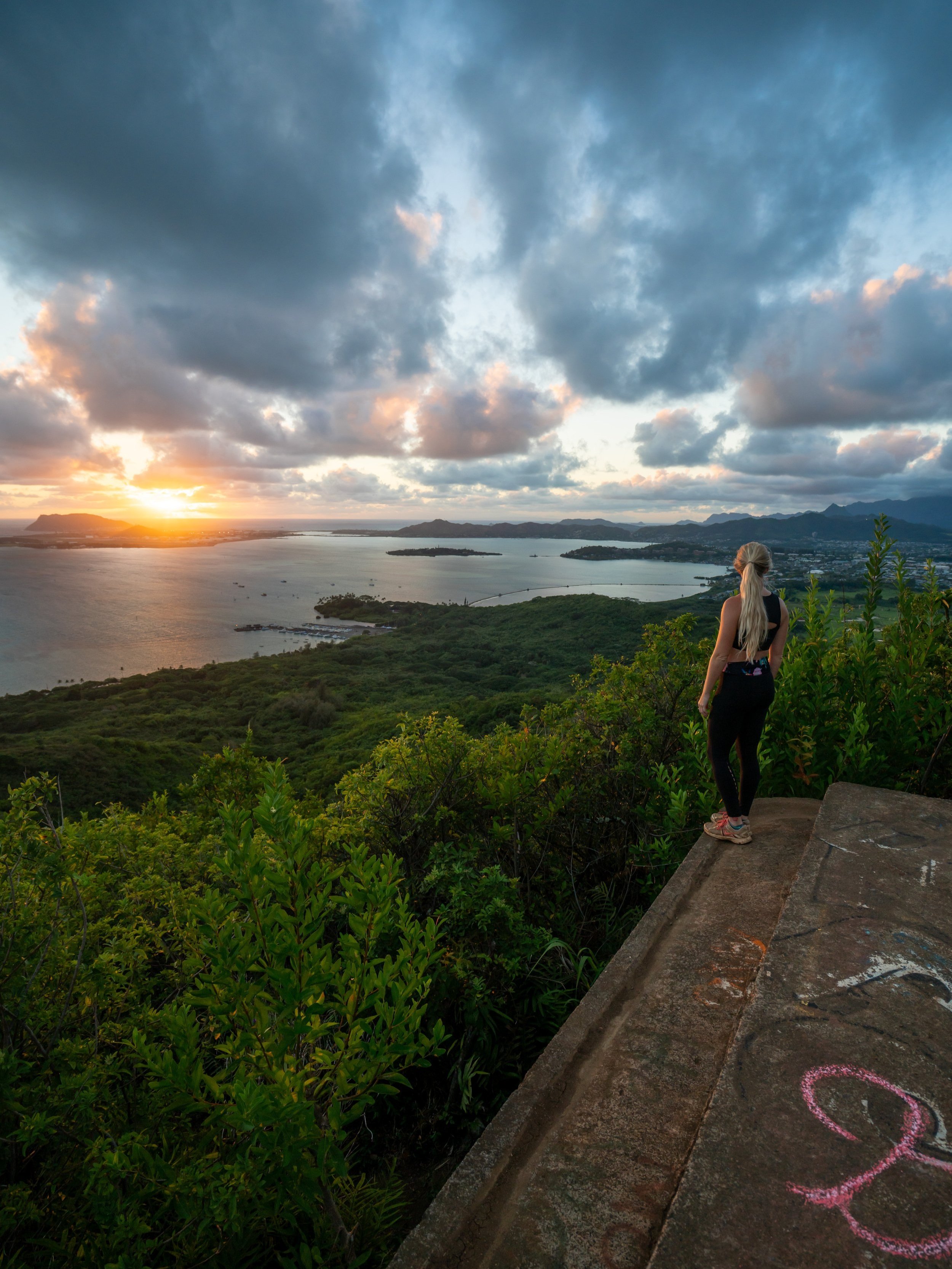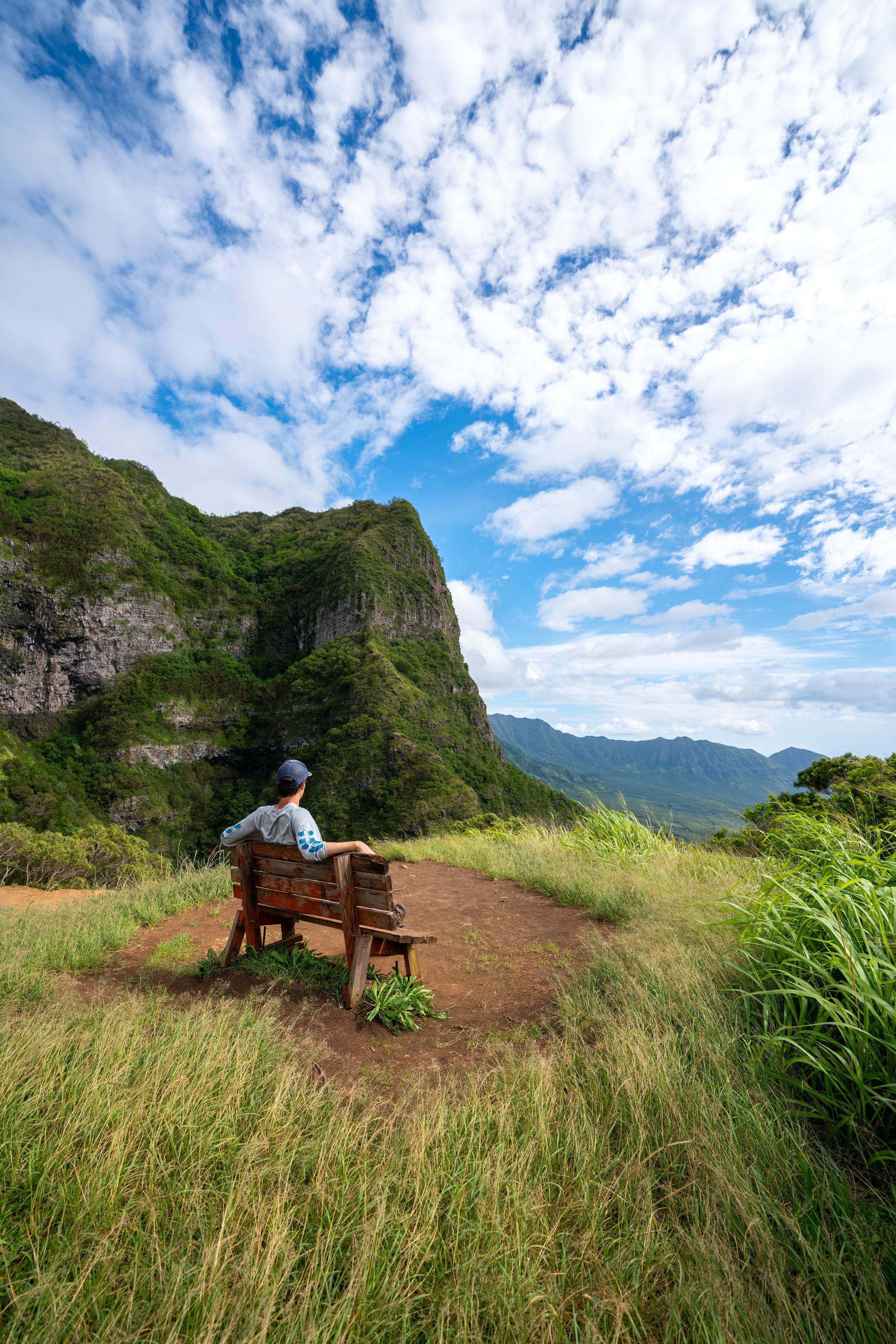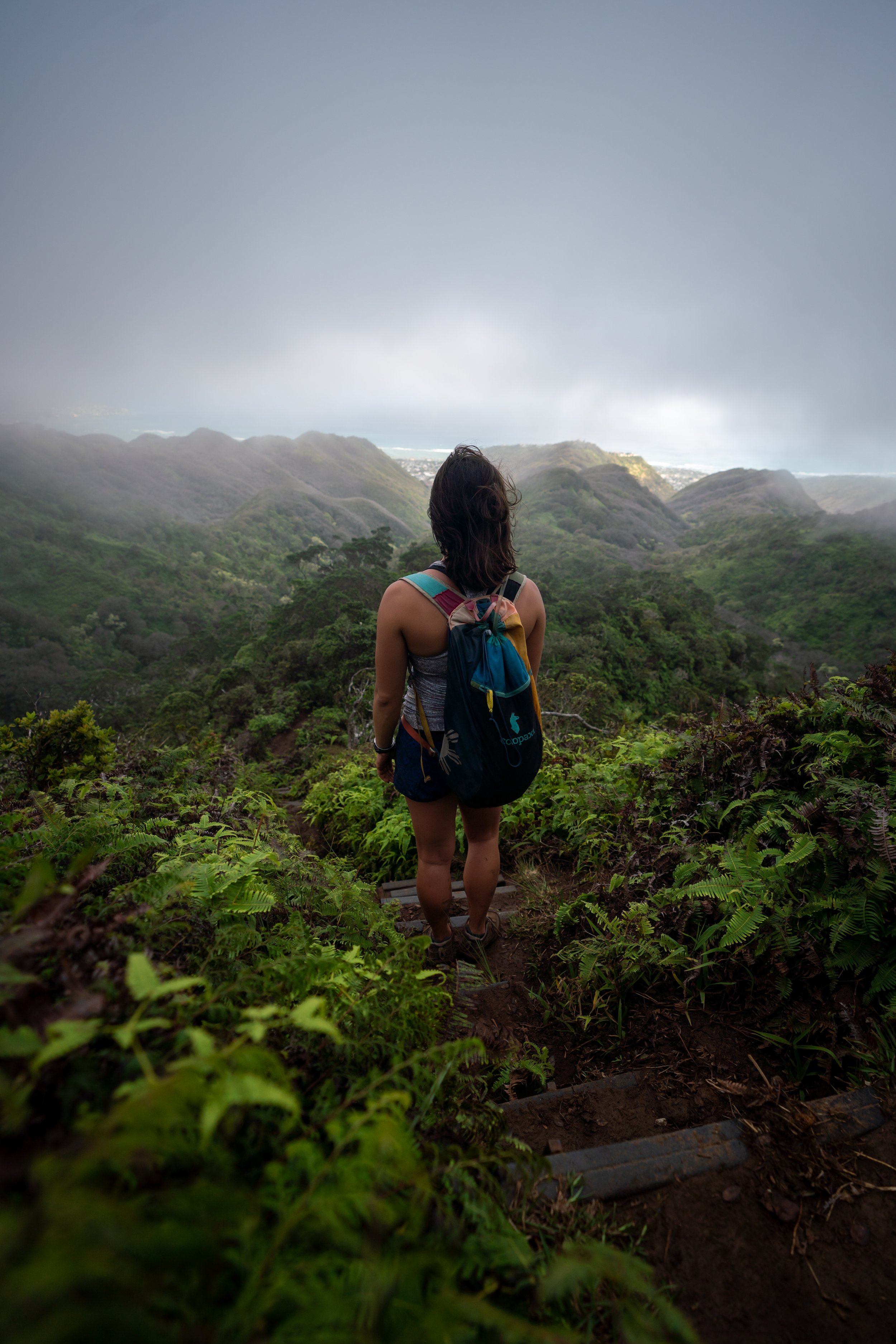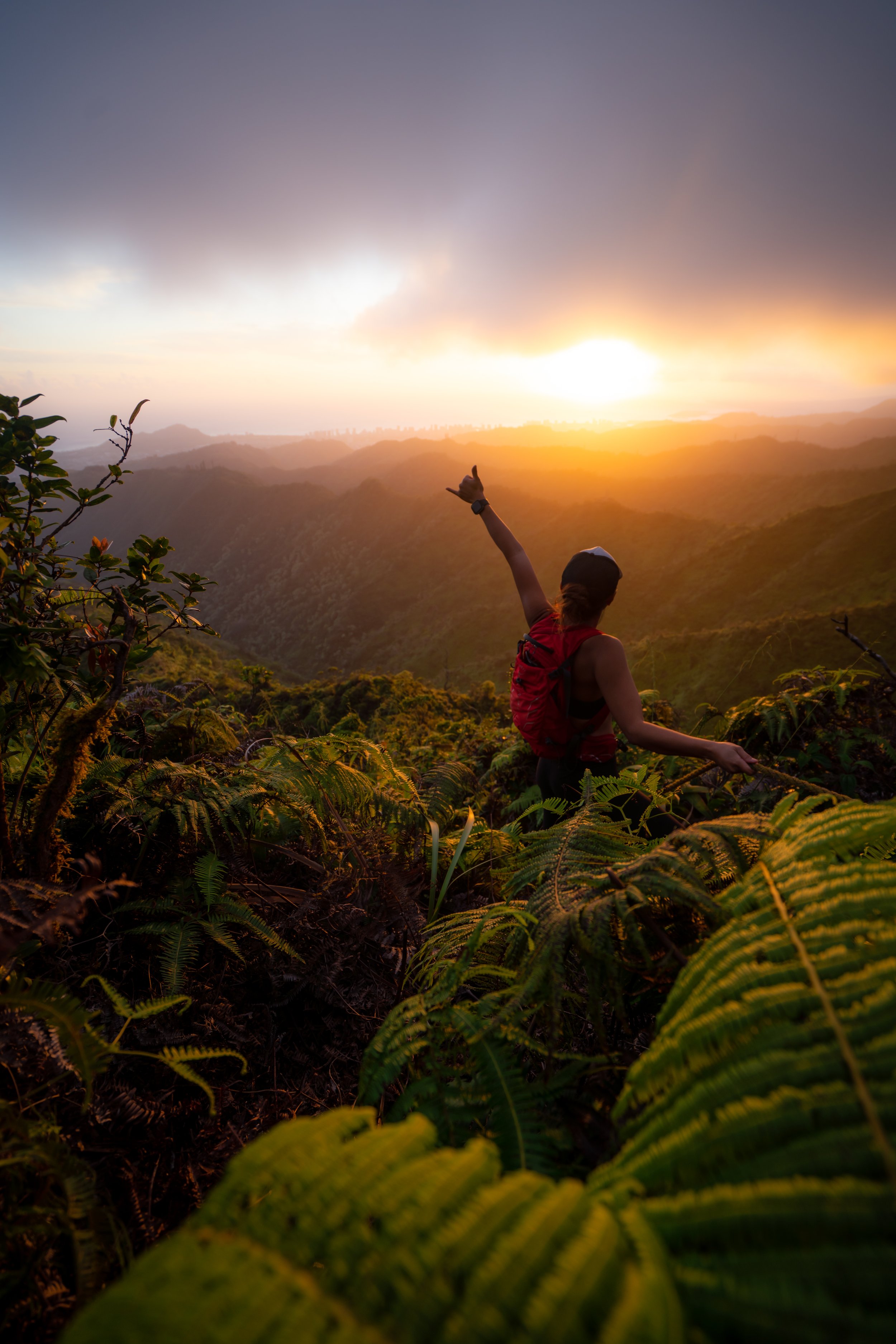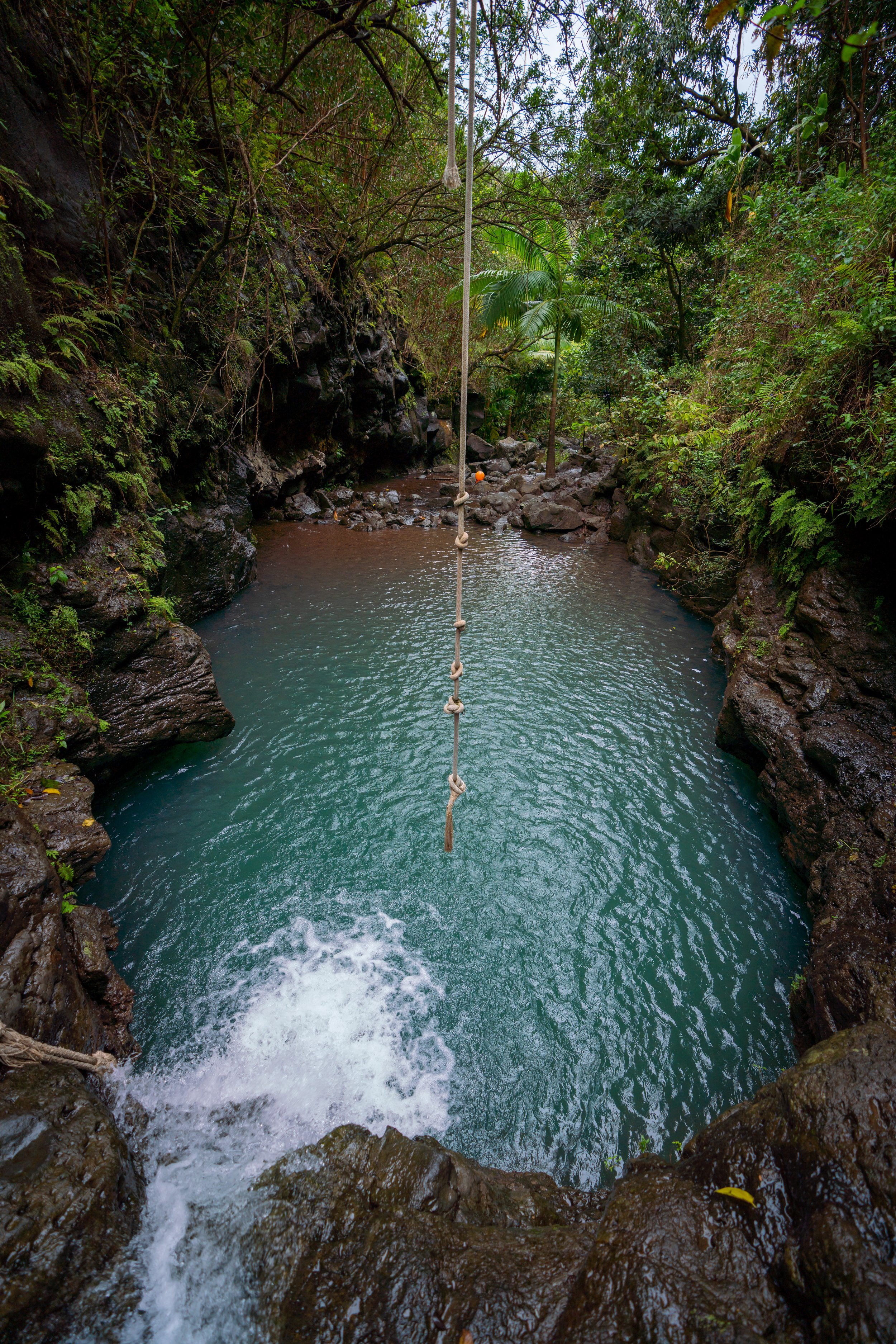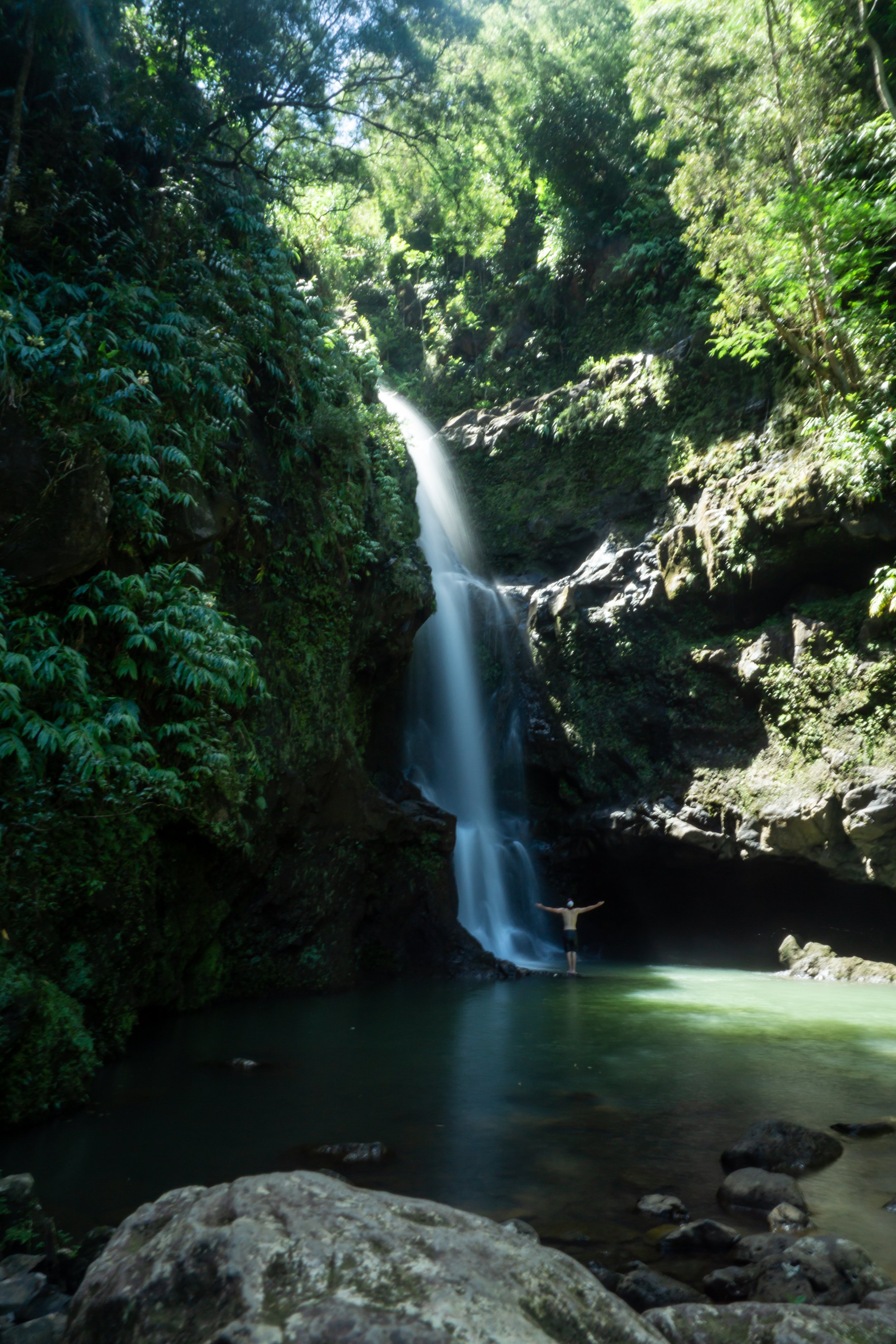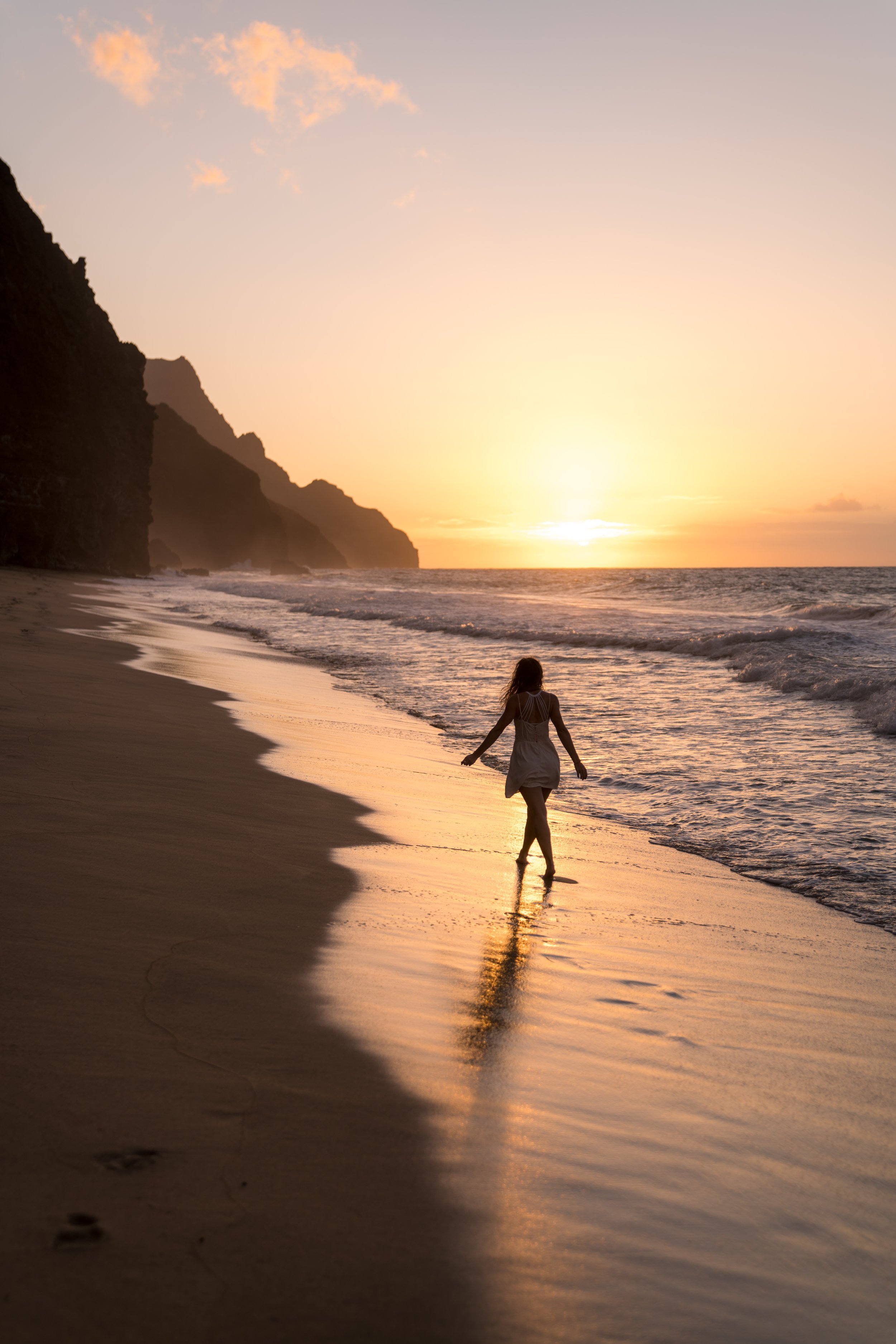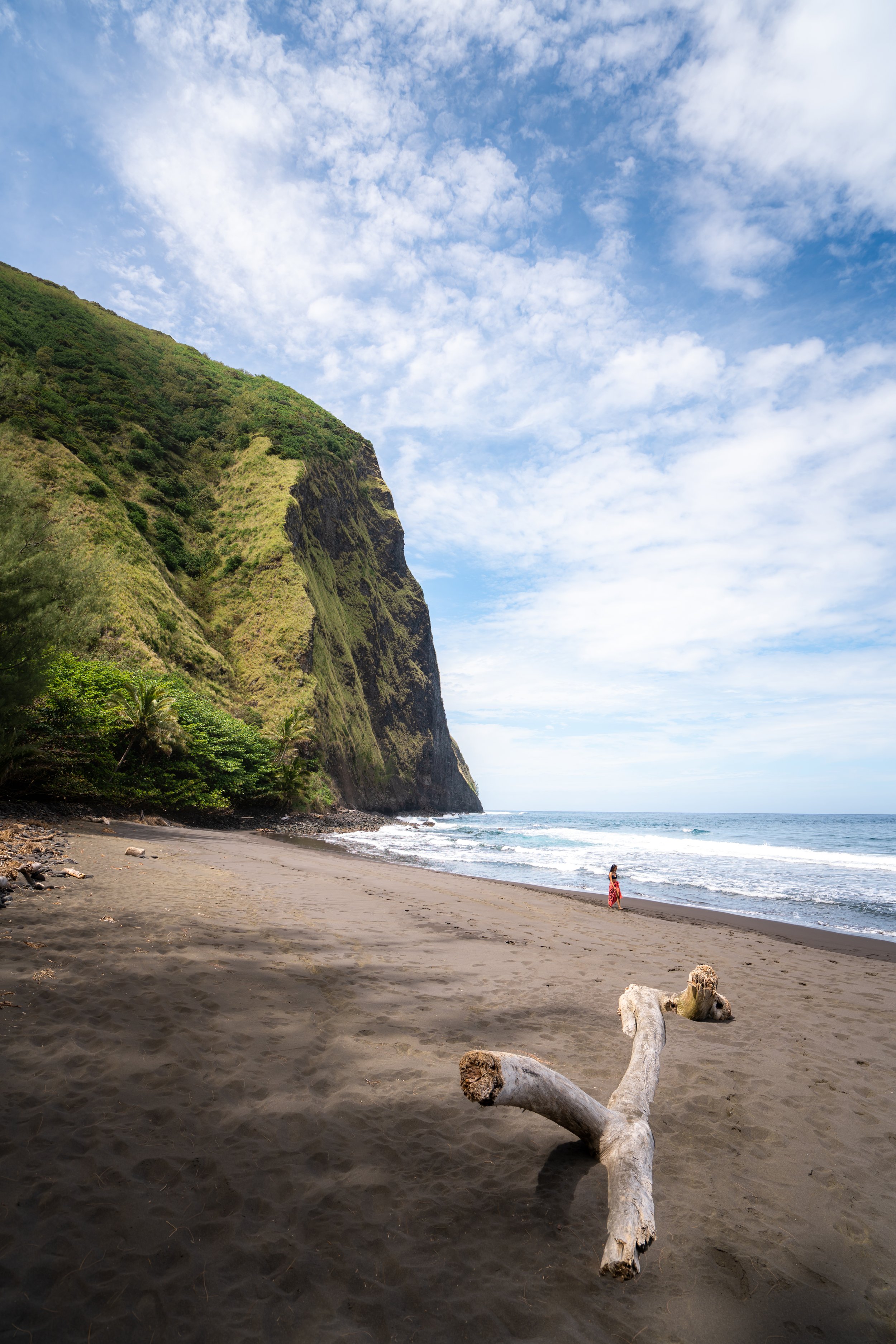Hiking the Kolowalu Trail to Waʻahila Ridge on Oʻahu, Hawaiʻi
Distance (Roundtrip): 2.2 miles / 3.5 km
Elevation Gain: ~1,250 ft. / 381 m
The Kolowalu Trail in the back of Mānoa Valley is best known for being a short but steep connector trail between the bottom of the valley, and the Waʻahila Ridge Trail above.
For some, the Kolowalu Trail is best known as a quick evening workout, as the elevation gain and intensity are comparable to the Koko Crater Stairs in Hawaiʻi Kai.
However, for others, Kolowalu is treated as a connector trail if, for example, you were interested in hiking across the Koʻolau Summit, while starting and ending in Mānoa. This is possible and most practical from both the ʻAihualama/ Puʻu Kōnāhuanui Trail, or the Mānoa Middle Ridge Trail.
Puʻu Pia / Kolowalu Trailhead Parking
Parking for the Kolowalu Trail is located on Alani Drive in the very back of Mānoa Valley.
That being said, be aware that parking is only allowed on the valley side (right side) of the road when facing the ocean, so as to allow for traffic to pass, like the city bus.
Google Maps Directions: Kolowalu Trailhead
My Hawaiʻi Hiking Checklist
Osprey 3L Water Bladder - The Osprey 3L water bladder is the most universal hiking and backpacking water bladder on the market, and it’s my go-to because of the slide-off seal that allows it to be quickly filled from the top. Additionally, individual parts are easily replaceable, such as the bite valve.
Blister / Heel Protectors - I swear by these cheap, amazing heel protectors to prevent blisters for nearly every kind of hiking and backpacking that I do!
Black Diamond Headlamp - Personally, I recommend the Black Diamond Storm because it is one of the brightest, lightest, and longest-lasting headlamps on the market—and trust me, the weight-to-battery-life ratio really does matter!
Hiking / Trail Running Shoes - Depending on the type of trail, I prefer to use either the Keen Targhee for longer, more rugged hiking or the HOKA Zinal Trail-Running Shoe for lighter, less intense trails. In either case, both have been amazing to me for many years across countless environments, and both can be found in men’s and women’s sizes. - (Men’s Keen / Women’s Keen) (Men’s HOKA / Women’s HOKA)
Waterproof Rain Shell - You never know when it may rain, and I’ve learned over the years that a rain shell is far better than a rain jacket. By this, I mean that it’s best to have something that the water will roll right off of, which is why I recommend the Patagonia Torrentshell 3L available in both men’s and women’s sizes.
High SPF Sunscreen - Packing high-SPF sunscreen is a must for long days outside!
Hiking the Kolowalu Trail
From the parking area, the Kolowalu Trailhead is located a bit further up Alani Drive, but parking is not allowed any closer than where it is shown above.
Once on the Kolowalu Trail, be sure to watch out for this chain across the path in the beginning, especially if you’re trail running.
Puʻu Pia-Kolowalu Junction
At about 0.2 miles (0.3 km), the Kolowalu Trail splits with the Puʻu Pia Trail that leads up to a completely separate viewpoint overlooking Mānoa Valley.
In any case, go right to stay on the Kolowalu Trail.
Read My Separate Post: Puʻu Pia Trail
After the Puʻu Pia Trail split, the Kolowalu Trail will climb gradually before getting steeper, following the landslide section shown below.
Kolowalu Landslide
For as long as I’ve been hiking Kolowalu, this section of trail, located about 0.5 miles (0.8 km) up the trail from the Puʻu Pia split, has always been a bit washed out, muddy, and a little more unstable.
However, follow the best path you can until it comes to a hard right, followed by a section that may or may not have ropes to help you up. Then, after a short detour around the landslide, the rest of the maintained trail can be found shortly after.
This is the hard right turn around the landslide.
Once back on the Kolowalu Trail, the hike will continue to climb gradually until the switchback in the photo below.
This switchback on the Kolowalu Trail is where the hike makes a seemingly stark change between the more gradual beginning and the steeper upper trail to Waʻahila Ridge.
It’s because of this steep section that previously, I compared the Kolowalu Trail to the Koko Head Stairs.
As the canopy begins to open, this upper section of the Kolowalu Trail is a great place to slow down and look for various native Hawaiian plants, which I’ll talk more about below.
Kolowalu-Waʻahila Ridge Junction
After 1.1 miles (1.8 km), the Kolowalu Trail ends where it meets Waʻahila Ridge at about 1.4 miles (2.3 km) from the state recreation trailhead atop St. Louis Heights.
However, if you were interested in climbing to the top of Mt. Olympus, the summit of Waʻahila Ridge, I actually don’t recommend beginning from the Kolowalu Trailhead because of all the elevation gain just to get to this point.
By this, I mean that to climb out of Mānoa Valley via Kolowalu, the trail gains roughly 1,250 ft. (381 m) in just over 1.0 miles (1.6 km), but by starting from the Waʻahila Ridge Trailhead, there’s only about 150 ft. (46 m) of net elevation gain to get to this point.
Therefore, I tend to think of the Kolowalu Trail as a quick workout or a connector trail with other hikes across the Koʻolau Summit, such as the Mānoa Middle Ridge Trail. This way, Kolowalu can make for a nice loop where you can both start and end in Mānoa Valley, or it makes for a nice sunset hike, especially in the winter when the sun sets further to the south.
Read My Separate Post: Waʻahila Ridge Trail
Native Plants on Kolowalu
For being a relatively low-elevation hike, the Kolowalu Trail is a surprisingly great place to find a variety of native Hawaiian plants.
On the upper switchbacks, you can expect to see Uluhe, ʻŌhiʻa lehua, Kōpiko, ʻIeʻie, Pilo, and I think my favorite is the Neleau trees, as they are not the most common species to see across Oʻahu.
If you would like to learn more about these and tons of other native Hawaiian plants from across the islands, I encourage you to learn more in my separate post.
Read My Separate Post: Native Hawaiian Plant Guide
More Oʻahu Adventures
If you’re interested in reading about some more amazing Oʻahu adventures, check out my separate posts below!
Best Hotels & Restaurants in Waikīkī
If you’re trying to decided where to stay on Oʻahu, check out my top 10 list for the best resorts and restaurants in Waikīkī.
I break down what makes one hotel a better choice over another, so that you can find the best fit for your stay on the island.
Read My Separate Post: Best Waikīkī Hotels & Restaurants
HNL Airport-Hotel Shuttle
Prices on ride-share apps like Uber/ Lyft cannot beat the price of booking your hotel shuttle prior to arrival. I say this because there are additional fees for ride-share airport pick-ups at Honolulu Airport (HNL), which is why I recommend booking your transportation in advance using the options below.
Additionally, the last option below will go as far as the Ko ʻOlina Resorts on the West Side and Turtle Bay on Oʻahu’s North Shore!
Best Way to Book Rental Cars!
I travel quite a bit, and I know firsthand that finding a good rental car deal can be a challenge, but that’s why I recommend comparing all of your options with Discover Cars.
In short, Discover Cars is a well-known, reputable business that allows you to search for the best deal across companies, and they have the best full-refund cancellation policy I’ve ever seen, valid up to 72, or sometimes even 48, hours prior to your reservation!
Book Here: Discover Cars
Visiting Other Islands
If you are visiting Oʻahu or heading to another island, check out some of my personal recommendations for Oʻahu, Maui, Kauaʻi, Molokai, Lānaʻi, and Hawaiʻi Island (Big Island) in these separate posts.
If you’re trying to decide which island is right for your visit, check out my overview about each island in the post below.
Read My Separate Post: What is the Best Hawaiian Island to Visit?
What is the Best Time of Year to Visit Hawaiʻi?
The weather in Hawaiʻi can often appear to be warm and beautiful throughout the year, but in my experience, there is a lot more to consider when planning what time of year to visit the islands, such as what island you are considering, what sides of each island do you plan to stay, what activities are you most interested in, the wildlife, and countless other nuanced variables that can all impact the type of trip you can expect to have.
For these reasons, I highly recommend reading through my separate article to not only understand my thoughts regarding the best time of year to come to Hawaiʻi but also what you need to consider based on the time of year that you plan to visit.
Read My Separate Post: What is the Best Time of Year to Visit Hawaiʻi?
10 Best Tours & Excursions on Oʻahu
There are a lot of different tour options to choose from on Oʻahu, but to make it easier to decide, I made a list of my favorite tours because some things simply are better with a local guide!
Read My Separate Post: Best Tours on Oʻahu
Safety
All hikes in Hawaiʻi should not be compared to trails outside of the islands, and hikers should exercise due caution on every adventure, given that many are extremely dangerous.
By this, I mean that Hawaiʻi is known for hot, humid weather, steep, dramatic, and unstable cliffs, and flash floods, which can occur without warning. Therefore, it is important that you check the local forecast, understand the physical condition of your entire group, and pack sufficient food and water before attempting any adventure.
Disclaimer
All information provided on this blog is for informational purposes only and is not intended to be a substitute for information or advice from qualified professionals or managing agencies.
Noah Lang Photography LLC makes no representations or warranties regarding the accuracy or completeness of the information provided here, and readers should use their own discretion, judgement, and seek professional advice where it is appropriate.
Furthermore, Noah Lang Photography LLC shall not be held responsible for any injuries, lost individuals, or legal issues arising from the use of information provided on this website, and if applicable, the above safety disclaimer should be referenced to provide a generic overview of the risks involved.
All said, the content on this blog is for the sole use of Noah Lang Photography LLC, and unauthorized use or reproduction of this content is strictly prohibited.
Disclosure
This post is not sponsored.
However, some of the links in this post are affiliate links, which means that I may earn a small commission if a purchase is made through one of those links. This commission comes at no additional cost to you, and I only recommend products that I personally use and believe will add value to my readers. Thank you for your support, which enables me to continue creating more!
To read the full privacy policy, click here.

About This Blog
Noah Lang Photography, also known as @noahawaii, is 100% reader-supported!
I do not accept guest articles or sponsored content of any kind on my blog, which is why, if you enjoy the outdoor and travel content I create, please consider buying me a coffee!
I appreciate your support, which helps me continue to keep this blog alive!










